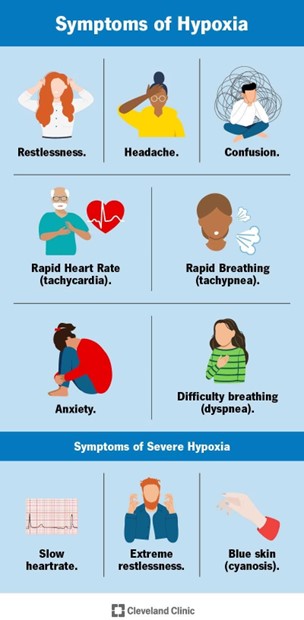A client with a history of type 1 diabetes mellitus (DM) and asthma is readmitted to the unit for the third time in two months with a current fasting blood sugar (FBS) is 325 mg/dL (18 mmol/L). The client describes to the nurse of not understanding why the blood glucose level continues to be out of control. Which intervention(s) should the nurse implement? (Select all that apply.)
Have the client demonstrate technique used to monitor blood glucose levels.
Evaluate the client's asthma medications that can elevate the blood glucose.
Ask the client if they want a different manufacturer's glucose monitoring device.
Understand the client's daily routine
Ensuring the client uses a new insulin needle for each administration
Correct Answer : A,B,D,E
A) Correct - Demonstrating the technique used to monitor blood glucose levels is crucial.
Incorrect technique can lead to inaccurate readings, impacting insulin dosing decisions and blood sugar control.
B) Correct - Some asthma medications, like corticosteroids, can elevate blood glucose levels.
Evaluating the client's asthma medications is essential as they can contribute to fluctuations in blood sugar levels.
C) Incorrect- Asking the client if they want a different manufacturer's glucose monitoring device is not helpful, because it does not address the underlying causes of the poor glycemic control. The client may also perceive this as a lack of confidence in their ability to manage their diabetes or as a criticism of their choice of device. The nurse should focus on educating the client on how to use their current device correctly and consistently, rather than suggesting a change that may not be necessary or feasible.
D) Correct - Understanding the client's daily routine helps identify factors influencing blood glucose control, such as meal timing, activity level, and stress. This information aids in creating a personalized diabetes management plan.
E) Correct - Ensuring the client uses a new insulin needle for each administration is important for preventing infection and complications. Reusing needles can affect injection site health and insulin absorption.
Nursing Test Bank
Naxlex Comprehensive Predictor Exams
Related Questions
Correct Answer is A
Explanation
A) Correct - The absence of coarse crackles indicates that the airway has been cleared of secretions effectively, and the lung sounds are clearer.
B) Incorrect - An increase in respiratory rate could indicate distress rather than the effectiveness of the intervention.
C) Incorrect - An increase in breath sounds may not necessarily indicate the effectiveness of the intervention, as the quality of breath sounds matters more than the increase.
D) Incorrect - The absence of fine crackles might not directly indicate the effectiveness of the intervention, as other factors can influence lung sounds.

Correct Answer is ["A","E"]
Explanation
The level of hypoxemia that the child may have experienced during the submersion depends on several factors, but the most important ones are:
- The **temperature of water**: Cold water can induce a diving reflex, which lowers the heart rate and oxygen consumption, and may protect the brain from hypoxic injury¹². Cold water can also cause laryngospasm, which prevents water aspiration but also impairs gas exchange.
- The **amount of time the child was submerged**: The longer the submersion, the more severe the hypoxemia and the higher the risk of brain damage and death. The survival rate decreases significantly after 5 minutes of submersion³.
The other factors are less relevant or not directly related to the level of hypoxemia:
- The **weight of the child**: This may affect the buoyancy and the ability to float or swim, but not the oxygen consumption or gas exchange during submersion¹.
- The **oxygen concentration of the ambient air**: This may affect the pre-submersion oxygen saturation, but not the rate of oxygen depletion or gas exchange during submersion¹.
- The **witnessing of the fall into the pool**: This may affect the time to rescue and resuscitation, but not the level of hypoxemia during submersion.

Whether you are a student looking to ace your exams or a practicing nurse seeking to enhance your expertise , our nursing education contents will empower you with the confidence and competence to make a difference in the lives of patients and become a respected leader in the healthcare field.
Visit Naxlex, invest in your future and unlock endless possibilities with our unparalleled nursing education contents today
Report Wrong Answer on the Current Question
Do you disagree with the answer? If yes, what is your expected answer? Explain.
Kindly be descriptive with the issue you are facing.
